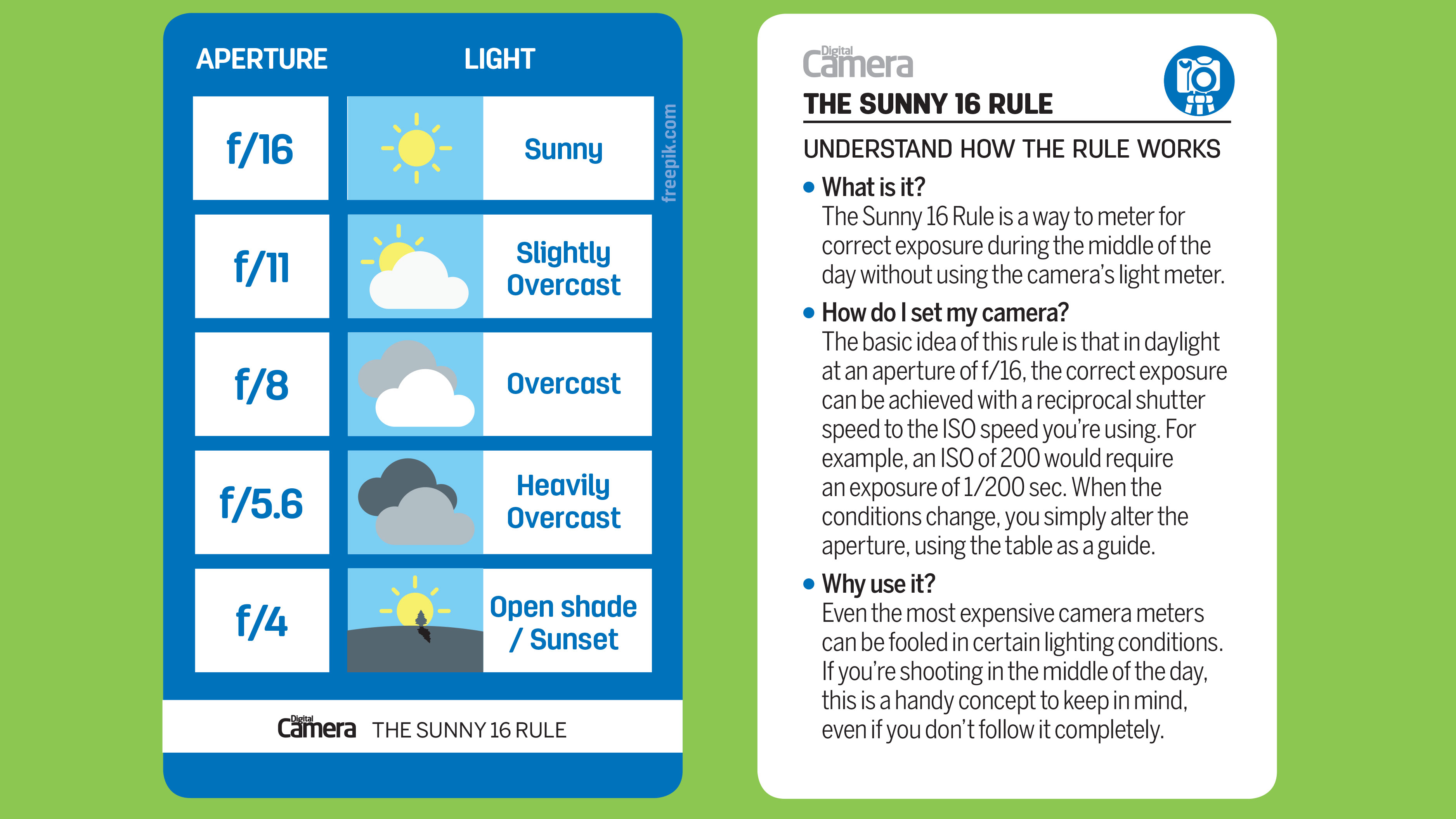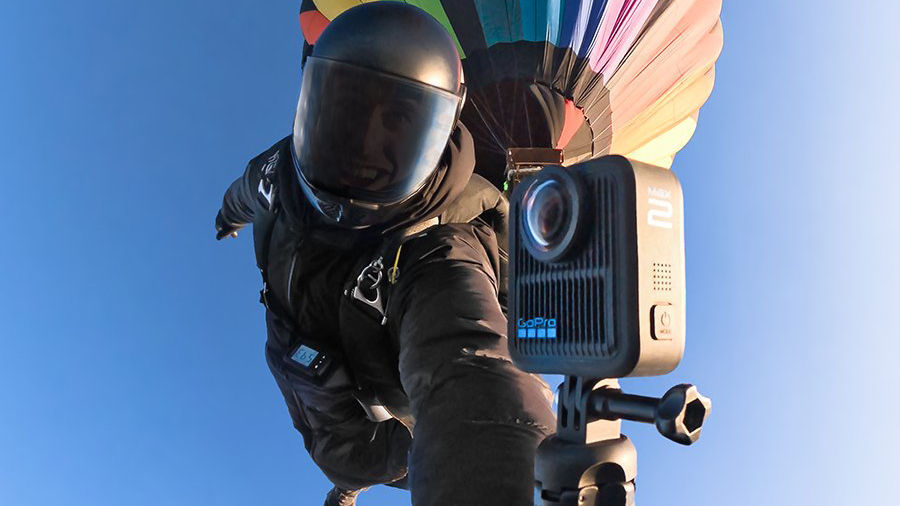Photography cheat sheet: the Sunny 16 Rule
You don't need your camera to tell you what the exposure is outside – you've got this!
Your camera has a hugely powerful and sophisticated light metering system that can intelligently analyze the light patterns, the light levels and even the subjects in your pictures and calculate what it thinks is the optimum exposure for your outdoor shots. And most of the time you don't need it.
Cameras have a knack of making even the most simple things look complicated and the fact is that if you're taking pictures out of doors you can make a pretty good stab at the correct exposure using your eyes alone and based on the weather conditions you're shooting in.
This is the basis of the so-called Sunny 16 Rule. Sometimes it's just as good as your camera meter; sometimes it's better, because your human brain is less likely to get confused by lighting than the one inside your camera.
We're not saying you should use the Sunny 16 Rule every day, but why not try it out? We think you'll be surprised at just how consistent, simple and reliable it can be. It's also a reminder that just because cameras can make things seem complicated, that doesn't mean that they are.
What is the Sunny 16 Rule?
The Sunny 16 Rule is a way to meter for correct exposure during the middle of the day without using the camera’s light meter. It's not 100% accurate, so that if you're shooting early or late in the day, or with a low, winter sun, you may need to increase the exposure a little. But it's probably going to be close enough, especially if you shoot raw files, which have a lot more processing latitude later.
How do I set my camera?
The basic idea of this rule is that in daylight at an aperture of f/16, the correct exposure can be achieved with a reciprocal shutter speed to the ISO speed you’re using. For example, an ISO of 200 would require an exposure of 1/200 sec. When the conditions change, you simply alter the aperture, using the table as a guide.
Why use it?
Even the most expensive camera meters can be fooled in certain lighting conditions. Very often, you'll find an intrinsically light or dark toned subject can fool the exposure system into trying to compensate for a subject that actually should be light or dark. And in high-contrast backlit situations, many cameras will bias their exposure towards the shadows, leave the rest of the shot overexposed.
The best camera deals, reviews, product advice, and unmissable photography news, direct to your inbox!
The Sunny 16 rule takes on a special significance if you need lighting consistency from shot to shot (rather than leaving it to the camera to make it up as it goes along).
More than anything else, though, the Sunny 16 rule is a great reminder that the principles of photography are often a lot simpler than we think.
Use the handy cheat sheet above to see this all for yourself. And make sure to keep us bookmarked for more great photography cheat sheets.
Read more
The exposure triangle explained
How to understand f-stops
How to understand ISO settings
Photography tips

Rod is an independent photography journalist and editor, and a long-standing Digital Camera World contributor, having previously worked as DCW's Group Reviews editor. Before that he has been technique editor on N-Photo, Head of Testing for the photography division and Camera Channel editor on TechRadar, as well as contributing to many other publications. He has been writing about photography technique, photo editing and digital cameras since they first appeared, and before that began his career writing about film photography. He has used and reviewed practically every interchangeable lens camera launched in the past 20 years, from entry-level DSLRs to medium format cameras, together with lenses, tripods, gimbals, light meters, camera bags and more. Rod has his own camera gear blog at fotovolo.com but also writes about photo-editing applications and techniques at lifeafterphotoshop.com

